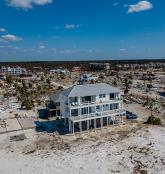The year 2020 is just months away, and in the latest edition of EXPOSURE — the RMS magazine for risk management professionals, we consider some of the changes that the (re)insurance industry will have undergone in ten years’ time. Mohsen Rahnama, Cihan Biyikoglu and Moe Khosravy from RMS tackle the issues, examining the evolution of risk management, the drivers of technological change, and how all roads lead to a common, collaborative industry platform.

With RMS introducing the Risk Data Open Standard (RDOS) open data standard, the potential now exists to change the way that the (re)insurance industry interacts with risk modeling data. Ryan Ogaard from RMS explains how the RDOS — set to become an industry open standard in early 2020, offers a flexible, fully transparent and highly efficient framework, spanning all risks, models and contracts and information sets — that can be implemented using a wide range of data technology.
The earthquakes in Ridgecrest, California in July this year were the strongest to hit the state for twenty years. Damage from these events was fortunately limited, but EXPOSURE asks what the implications for the insurance industry are if a sizeable event was to strike a highly populous area in California today. The state also accounts for over 20 percent of the U.S. workers’ compensation insurance market, with the sector’s largest premium concentrated in the area of the U.S. most exposed to earthquake risk. EXPOSURE looks at how workers’ compensation could be impacted by a significant California earthquake event during peak work-time hours.
Average annual insured losses from severe convective storms (SCS) in the U.S. are comparable with losses from hurricanes, and EXPOSURE looks at the loss drivers for SCS and how single events have cost insurers and reinsurers over US$3 billion in claims.
The Canterbury Earthquake Sequence in 2010-2011 caused damage to approximately 168,000 residential buildings, and EXPOSURE talked to the Mayor and members of her team at Christchurch City Council about how they are embedding resilience into every aspect of their reconstruction and future planning.
Climate change rises up the industry’s agenda, and EXPOSURE provides the context behind the U.K. regulator’s inclusion of climate change scenarios into its stress tests, and talks to Paul Wilson, head of non-life analytics at Securis Investment Partners, on why insurance-linked securities (ILS) investors want to know more about how climate change impacts investment decisions.
And with evidence showing that the size of homes that replace those impacted by hurricanes has increased, and sharp population growth in U.S. coastal areas, EXPOSURE asks Robert Muir-Wood from RMS why is it that, in many different situations and perils, people appear to want to relocate toward the risk, as we explore “risk tropism”.
The Dive In Festival also gets in full swing next week, and EXPOSURE examines the factors influencing the speed at which the diversity and inclusion dial is moving.
To view all of the stories in the current edition of EXPOSURE, click here or to browse over eighty stories across all editions, click here.








